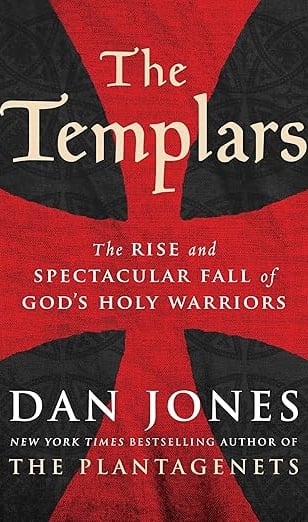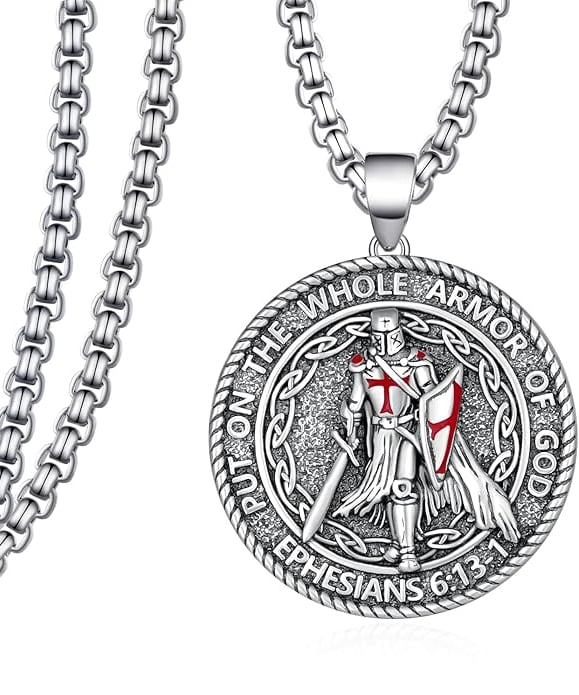Knights Templar: Rise, Power, & Downfall
Explore the Knights Templar’s incredible journey—from humble crusaders to powerful financiers to tragic victims of betrayal. A richly detailed, true historical account.
HISTORIC EVENTSWARS AND BATTLESHISTORICAL FIGURES
Michael Keller
10/2/202517 min read
From Humble Beginnings to Holy Warriors
The Knights Templar did not begin as Europe’s most feared warriors. In 1119, they were little more than nine men, led by a French nobleman named Hugues de Payens. [1] Their mission seemed almost humble: to safeguard Christian pilgrims on the dangerous roads to Jerusalem.
The need was dire. The First Crusade, called by Pope Urban II in 1095, had shocked the world by capturing Jerusalem in 1099. [2] Out of that victory rose fragile Crusader states—small Christian kingdoms planted deep in hostile territory. Pilgrims poured in from across Europe, determined to see the holy places now in Christian hands. But the journey was perilous. Bandits, raiders, and rival armies haunted the roads, and many travelers never reached their destination.
It was into this uncertainty that Hugues and his companions offered themselves. Unlike monks, their vows of poverty, chastity, and obedience were bound to the sword. Their callingwas not to retreat from the world but to defend those who entered it unarmed and faithful.
In Jerusalem, their service gained royal recognition. King Baldwin II granted them quarters within the sacred precincts of the Temple Mount, believed to stand on the ruins of Solomon’s Temple. [3] From this unlikely beginning, the small brotherhood began its transformation into something far greater—an order that would soon capture the imagination of Christendom.
Papal Blessing and Explosive Growth
For nearly a decade, the Knights Templar remained little more than a rumor in the East—an obscure fraternity of warrior-monks stationed in Jerusalem. Few in Europe had even heard of them, and fewer still understood their purpose. But in 1129, their fate changed forever at the Council of Troyes in France. [4]
This was no minor gathering. The council was attended by bishops, abbots, and representatives of Europe’s most powerful noble families. The First Crusade had been a shocking success, but the Christian hold on the Holy Land was fragile. Pilgrims still streamed eastward, but the path was perilous. The Church needed warriors who could defend not only Jerusalem, but also the flow of pilgrims who gave meaning to its conquest. Into this anxious atmosphere stepped Hugues de Payens and his brothers, presenting their case for recognition.
Their cause might have gone unnoticed—had it not been for Bernard of Clairvaux. Bernard was no ordinary abbot; he was one of the most influential voices in Christendom. [5] A fiery preacher, reformer, and advisor to kings and popes alike, Bernard could legitimize or destroy movements with his pen. And he chose to champion the Templars. In his writings and speeches, Bernard framed them as a new and holy paradox: knights who bore swords not for earthly glory but for Christ himself. They were not mercenaries but martyrs-in-waiting, men who lived as monks but fought as soldiers of God.
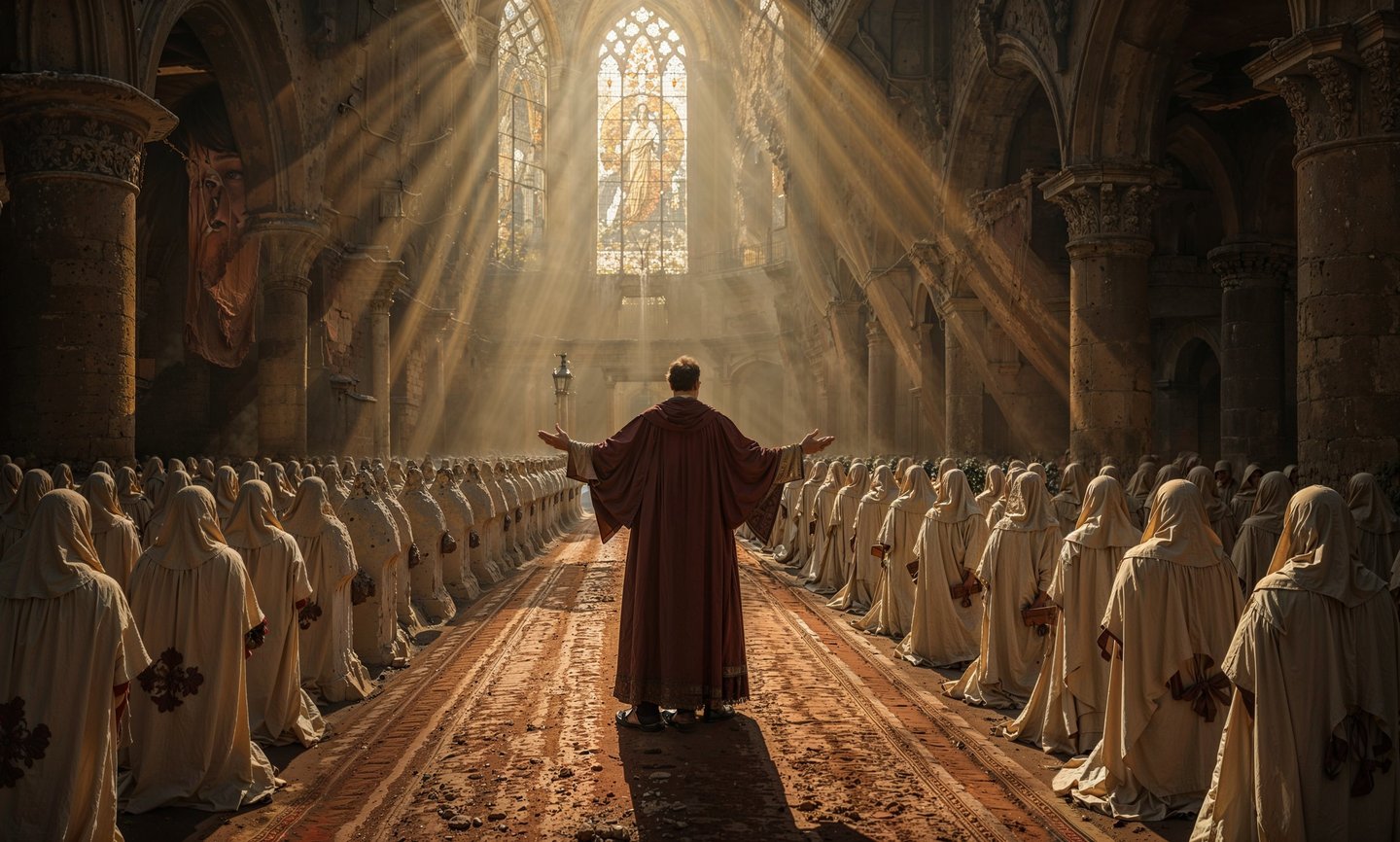

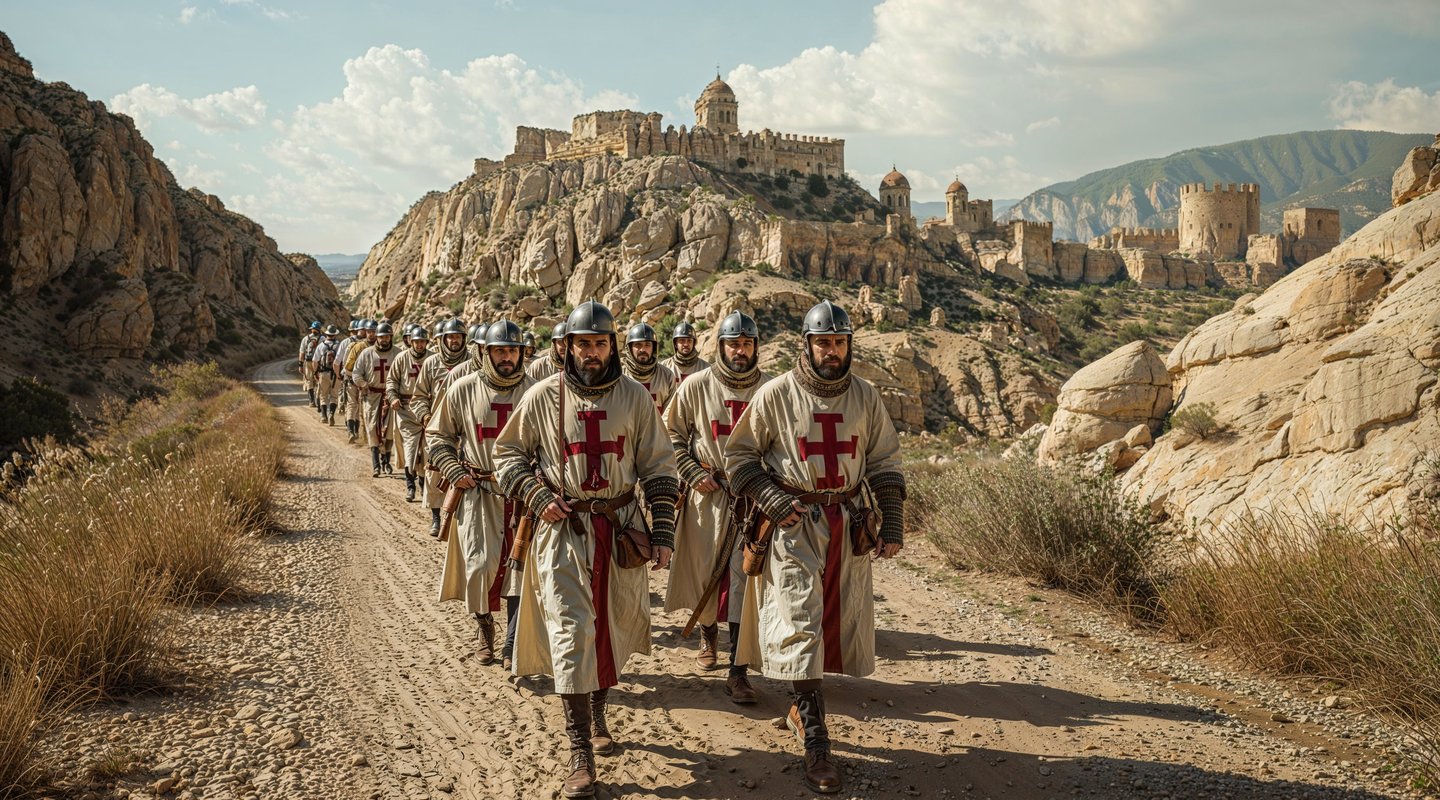

With Bernard’s endorsement, the Templars were transformed almost overnight. The council granted them official recognition, and soon after, Pope Honorius II placed them under direct papal authority. [6] This meant they were answerable to no king, no bishop, no feudal lord—only to the Pope himself. They owed no taxes, could cross borders freely, and stood outside the reach of local courts. In a Europe fractured by petty rivalries and jealous monarchs, such independence made them untouchable.
The results were immediate. From the great lords of France to humble peasants in rural villages, donations poured in. To give to the Templars was not just charity—it was a spiritual investment. [7] Landowners believed that granting a farm, a vineyard, or even an entire village to the Order might shorten their time in purgatory or secure divine favor for their families. Kings saw them as useful allies who could defend frontiers and stabilize trade routes. Within a generation, the nine obscure knights of Jerusalem had become an international order, with holdings stretching from England to Spain, from the Rhine Valley to the Holy Land itself.
The change was more than material. With papal sanction and growing wealth, the Templars began to cast a long shadow across Christendom. Their white mantles, marked with a stark red cross, became a symbol of piety and power—a visual reminder that these were not ordinary warriors. They were consecrated by God, feared by enemies, and untouchable by earthly rulers.
The Tide Turns
But power always breeds resentment. By the late 13th century, the tides of history were turning sharply against the Crusader states. For nearly two centuries, Jerusalem and its surrounding lands had been the heart of Christian ambition in the East, but the Muslim powers of the region—united under the leadership of Saladin—were relentless. His crushing victory at Hattin in 1187 annihilated the Crusader army and opened the road to Jerusalem, which soon fell back into Muslim hands. [18]Though later crusades managed brief successes, the balance of power had shifted.
When Acre fell in 1291, it was not just the loss of a fortress but the final collapse of the Crusader dream. Acre had been the last great Christian stronghold on the Mediterranean coast of the Holy Land, a hub of trade, diplomacy, and military supply. Its fall sent shockwaves through Europe. [19] To contemporaries, it felt like the end of Christendom’s divine mission in the East. For the Knights Templar—who had been forged for the defense of Jerusalem—it meant the very reason for their existence had crumbled to ash. They were warriors without a holy war.
And yet, the Order did not fade. Their castles still dotted the landscapes of France, England, Spain, and Portugal. Their vast estates, farms, and vineyards continued to produce wealth. Their banking system still funneled coin across Europe, serving nobles, merchants, and monarchs alike. [20] They were no longer indispensable defenders of Jerusalem—but they remained staggeringly rich, politically independent, and, most dangerously, bound only to the Pope. [21]
In a Europe where monarchs were consolidating power, that independence was a direct challenge. Kings increasingly demanded loyalty, taxes, and control from all who held wealth within their realms. But the Templars answered to no king, no prince—only to the pontiff in Rome. They were both everywhere and untouchable. Their red cross banner flew across Europe, but it owed allegiance to no crown. [22]
Among those uneasy monarchs, none loomed larger than Philip IV of France—Philip the Fair. Despite his epithet, he was remembered not for kindness but for cold calculation. Philip sought to centralize royal authority and elevate France as the leading power in Europe, but his ambitions bled the treasury dry.[23] Endless wars against England and Flanders, combined with costly disputes with the Papacy itself, left him perpetually short of coin.
And here lay the paradox: the Templars had been his bankers, the keepers of his debts. Their Paris headquarters functioned almost like a royal treasury, storing not only their own vast reserves but also the funds of the crown itself. [24] To Philip, this was intolerable. What the Templars considered sacred privilege—their independence, their immense wealth, their freedom from local control—Philip saw as a threat to his sovereignty and a golden opportunity for his crown.
The Templars had survived the deserts and battlefields of the Levant, but now they faced something far more dangerous: the envy and ambition of kings.
Friday the 13th, 1307
At dawn on October 13, 1307, the trap was sprung. Across France, in towns, villages, and castles alike, royal agents moved with chilling precision. Acting on sealed orders opened only hours before, they burst through doors, dragged knights from their beds, and seized commanderies before a single warning could spread. By nightfall, hundreds of Templars—men who only yesterday were honored as Christ’s defenders—were bound in chains and branded as criminals. [25]
The accusations that followed sent shockwaves through Christendom. These were not charges of corruption, which could perhaps have been believed of a wealthy order. No—Philip struck at the very soul of their identity. The knights of the Temple were accused of heresy: of denying Christ, spitting upon the cross, engaging in obscene and perverse initiation rites, and even worshiping a shadowy demon-idol known as Baphomet. [26] In a medieval world where the Church defined truth, heresy was not merely a crime—it was treason against God Himself, punishable by fire.
The sheer audacity of the charges stunned Europe. For nearly two centuries, the Templars had marched under the papal banner, defended Jerusalem, and poured their blood into battles fought in Christ’s name. They were an order consecrated by the Pope himself, praised by saints, and entrusted with the treasures of kings. And yet now, in the span of a single morning, they were recast not as holy warriors but as blasphemers and sorcerers.
To modern historians, the accusations are almost certainly fabrications—propaganda crafted to serve Philip’s true purpose: the destruction of a rival power and the seizure of their immense wealth. [27] But in the early 14th century, Europe was fertile soil for such claims. This was an age when famine and plague loomed, when whispers of witchcraft could see entire villages condemned, when superstition and faith intertwined so tightly that to be accused was often as damning as to be guilty.
Philip understood this climate and wielded it like a weapon. By branding the Templars not as political enemies but as heretics, he ensured that resistance to his actions could be framed as resistance to the Church itself. Once suspicion had been planted, it spread like fire in dry grass. Even the most faithful knight could not escape the shadow of doubt, and in an era where the salvation of one’s soul was paramount, the stain of heresy was deadlier than any sword.
What began as a dawn raid in France was quickly transforming into a spectacle that threatened to unravel the very order that had once stood as Christendom’s shield.
Dan Jones delivers a gripping, generational retelling of the Templars, drawing on rich original sources to separate fact from myth. These Christian holy warriors, bound by strict vows and papal protection, fought hand-to-hand against Islamic forces on the very lands where Jesus lived, facing the formidable Saladin.
Beyond the battlefield, they became masters of finance, creating the medieval world’s most advanced banking network and waging private wars to protect their interests. Jones captures both their heroism and alleged depravity, crafting a narrative that is as thrilling as it is illuminating—a must-read for history lovers.
Forged in Battle
The Templars did not earn their fame in cloisters or sermons but on the killing fields of the Holy Land. From the moment they rode into battle, they proved themselves indispensable to the survival of the Crusader states—those fragile Christian kingdoms carved from conquered Muslim lands after the First Crusade. [8] Unlike Europe, where nobles could summon armies of vassals, the Latin East was always undermanned, hemmed in by enemies who vastly outnumbered them. Every sword mattered, and the Templars were not merely swords—they were a wall.
Their discipline became legend. At the Siege of Ascalon in 1153, the Templars fought with a ferocity that helped bring down the last major Fatimid stronghold on the coast of Egypt. [9] Its capture gave the Crusaders a crucial port and denied their enemies a gateway into the Levant. Chroniclers recorded that the Templars held firm even when others faltered, pushing into the breach where lesser men might have broken. And this was not an isolated feat—it was the beginning of a reputation that spread from castle to campfire across Christendom.
The difference lay not only in their courage but in their organization. Where feudal knights often fought for plunder, glory, or fleeting obligation to a lord, the Templars fought under vows of obedience. They charged not as scattered individuals, but as a single body of armored horsemen, drilled to hold formation no matter the chaos of battle. When the white mantles marked with the red cross appeared on the horizon, it signaled an unyielding force—men who did not retreat, who obeyed their commanders even unto death. [10]
That discipline made them the natural choice for the vanguard. Again and again, they were placed at the front of Crusader armies, expected to take the first and fiercest blows. Their role was brutal but vital: absorb the shock, hold the line, and give the rest of the army time to fight or flee. In campaigns where levies melted away and mercenaries deserted, the Templars endured. Chroniclers praised them as champions of Christ, and their enemies came to fear the very sight of them. [11]
Their valor was not confined to open battle. The Templars also became guardians of some of the most strategic fortresses of the Latin East—Safed, Gaza, and others that formed the outer ring of defense for the Crusader kingdoms. [12] These castles were not mere stone keeps; they were the bulwarks that held back waves of invasion. Siege after siege battered their walls, and yet for decades the Templars endured, holding territory that might otherwise have collapsed long before. In moments when Christian armies faltered, it was often the Templars who fought to the last, buying precious time for retreat and sparing thousands from slaughter. [13]
Their reputation spread swiftly, not just in Europe but across the Islamic world. Muslim leaders, including Saladin, came to recognize the Templars as their most formidable foes. [14] Saladin clashed with them bitterly in the 12th century and reportedly respected their resolve even as he sought their destruction. To Christian pilgrims, they were living saints with swords in hand. To Muslims, they were enemies as relentless as they were disciplined. In both worlds, they were something rare in medieval warfare: a force defined not by wealth or numbers, but by sheer, terrifying unity.
More Than Warriors: Masters of Finance
The Templars’ power did not rest on sword and shield alone. War in the Holy Land was expensive, and sustaining armies an ocean away required resources far beyond what feudal lords could muster. To bridge this gap, the Templars pioneered a financial system that reshaped medieval Europe. [15]
They created a network of commanderies and estates across the continent—farms in France, vineyards in Spain, ports in England, and trading posts along the Mediterranean. Revenues from these holdings poured into their coffers and funded their campaigns abroad. But their most remarkable innovation was the development of letters of credit: a pilgrim leaving England could deposit money with the Templars in London, receive a coded receipt, and safely withdraw the same value in Jerusalem.[16] In an age when carrying gold across lawless roads meant near-certain robbery, this system was revolutionary. It made the Templars not only guardians of pilgrims’ lives, but also of their fortunes.
As their reputation for honesty and efficiency spread, kings and nobles entrusted the Order with their treasuries. The Templars became bankers to monarchs, custodians of state revenues, and financial advisors in courts across Europe. [17] Their stone fortresses doubled as treasuries and command centers, rising from Portugal to the Syrian frontier, reminders of both their military strength and their economic reach.
This union of sword and ledger made the Templars unique: they were warrior-monks who could charge into battle by day and balance the books by night. But such power bred envy, and admiration often curdled into suspicion.
Yet the fascination with the Templars endures precisely because their story feels unfinished. Their sudden destruction left unanswered questions, loose threads, and whispers of survival. Did all of their wealth and knowledge truly vanish into the hands of kings and popes? Or did some escape the flames, carrying with them treasures, truths, and traditions too dangerous for their age?
More than seven centuries later, their red cross still lingers in our imagination. Were the Templars truly destroyed… or did they slip into the shadows, waiting for the moment to rise again?For feedback or inquiries, email: contact@archivinghistory.com. We look forward to hearing from you!
Join Archiving History as we journey through time! Want to stay-tuned for our next thrilling post? Subscribe!
Follow us on Facebook, Instagram, YouTube and TikTok for captivating insights, engaging content, and a deeper dive into the fascinating world of history.
Source(s):
1. Malcolm Barber, The New Knighthood: A History of the Order of the Temple (Cambridge: Cambridge University Press, 1994), 6–12.
2. Thomas Asbridge, The First Crusade: A New History(Oxford: Oxford University Press, 2004), 312–20.
3. Helen J. Nicholson, The Knights Templar: A New History(Stroud: Sutton Publishing, 2001), 18–26.
4. Alain Demurger, The Last Templar: The Tragedy of Jacques de Molay, Last Grand Master of the Temple (London: Profile Books, 2004), 12–18.
5. Bernard of Clairvaux, In Praise of the New Knighthood, trans. M. Conrad Greenia (Kalamazoo: Cistercian Publications, 2000), 29–34.
6. Malcolm Barber, The Trial of the Templars, 2nd ed. (Cambridge: Cambridge University Press, 2006), 5–10.
7. Jonathan Riley-Smith, The Crusades: A History, 2nd ed. (New Haven: Yale University Press, 2005), 140–51.
8. Jonathan Riley-Smith, The First Crusaders, 1095–1131(Cambridge: Cambridge University Press, 1997), 200–10.
9. Malcolm Barber, The New Knighthood: A History of the Order of the Temple (Cambridge: Cambridge University Press, 1994), 93–95.
10. Helen Nicholson, The Knights Templar: A New History(Stroud: Sutton Publishing, 2001), 45–47.
11. Malcolm Barber, The New Knighthood: A History of the Order of the Temple (Cambridge: Cambridge University Press, 1994), 105–7.
12. Jonathan Riley-Smith, The Crusades: A History, 2nd ed. (New Haven: Yale University Press, 2005), 233.
13. Christopher Tyerman, God’s War: A New History of the Crusades (Cambridge, MA: Harvard University Press, 2006), 449–50.
14. Amin Maalouf, The Crusades Through Arab Eyes (New York: Schocken Books, 1984), 207–9.
15. Alain Demurger, The Last Templar: The Tragedy of Jacques de Molay (London: Profile Books, 2005), 52–53.
16. Peter Partner, The Murdered Magicians: The Templars and Their Myth (Oxford: Oxford University Press, 1982), 38–39.
17. Barbara Frale, The Templars: The Secret History Revealed(New York: Arcade Publishing, 2009), 77.
18. Thomas Asbridge, The Crusades: The Authoritative History of the War for the Holy Land (New York: Ecco, 2010), 473–75.
19. Malcolm Barber, The Trial of the Templars, 2nd ed. (Cambridge: Cambridge University Press, 2006), 21.
20. Malcolm Barber, The New Knighthood: A History of the Order of the Temple (Cambridge: Cambridge University Press, 1994), 298–300.
21. Alain Demurger, The Last Templar: The Tragedy of Jacques de Molay (London: Profile Books, 2005), 88–89.
22. Helen Nicholson, The Knights Templar: A New History(Stroud: Sutton Publishing, 2001), 152.
23. Elizabeth A.R. Brown, “The Prince Is Father of the King: Philip the Fair and the Papacy,” Speculum 56, no. 3 (1981): 528–31.
24. Barbara Frale, The Templars: The Secret History Revealed(New York: Arcade Publishing, 2009), 101.
25. Malcolm Barber, The Trial of the Templars, 2nd ed. (Cambridge: Cambridge University Press, 2006), 31–32.
26. Peter Partner, The Murdered Magicians: The Templars and Their Myth (Oxford: Oxford University Press, 1982), 68–70.
27. Christopher Tyerman, God’s War: A New History of the Crusades (Cambridge, MA: Harvard University Press, 2006), 823–24.
28. Helen Nicholson, The Proceedings Against the Templars in the British Isles, 1308–1311 (Farnham: Ashgate, 2011), 17–18.
29. Thomas Madden, The Concise History of the Crusades, 3rd ed. (Lanham: Rowman & Littlefield, 2014), 198.
30. Jonathan Riley-Smith, The Crusades: A History, 2nd ed. (New Haven: Yale University Press, 2005), 303.
31. Malcolm Barber, The Trial of the Templars, 2nd ed. (Cambridge: Cambridge University Press, 2006), 236–38.
32. Alain Demurger, The Last Templar: The Tragedy of Jacques de Molay (London: Profile Books, 2005), 176.
33. Barbara Frale, The Templars: The Secret History Revealed(New York: Arcade Publishing, 2009), 147–48.
34. Peter Partner, The Murdered Magicians: The Templars and Their Myth (Oxford: Oxford University Press, 1982), 113.
35. Helen Nicholson, The Knights Templar: A New History(Stroud: Sutton Publishing, 2001), 202–3.
36. Christopher Tyerman, God’s War: A New History of the Crusades (Cambridge, MA: Harvard University Press, 2006), 829.
37. Michael Haag, The Templars: History and Myth (London: Profile Books, 2009), 251–53.
38. Jonathan Riley-Smith, The Crusades: A History, 2nd ed. (New Haven: Yale University Press, 2005), 307.
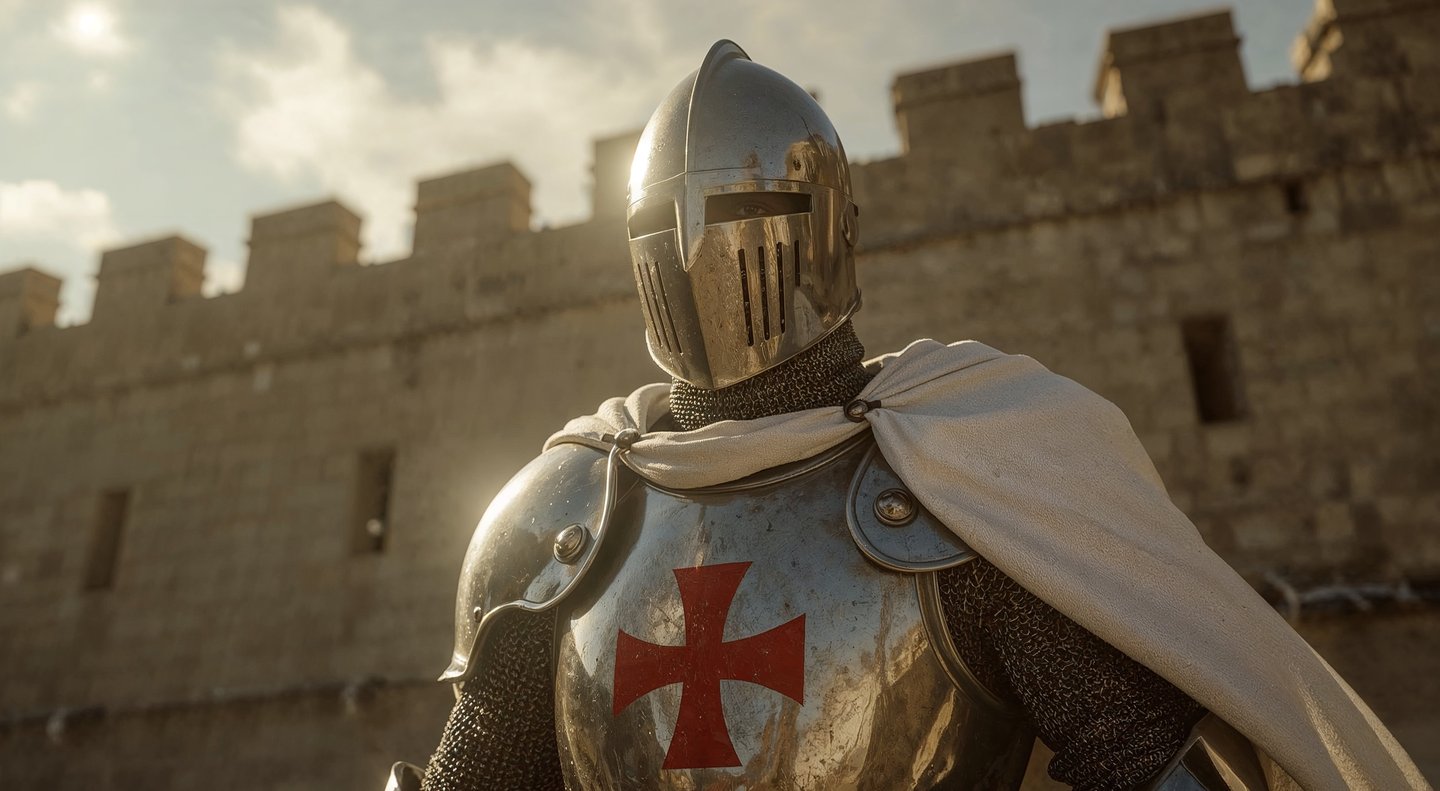

925 Sterling Silver Armor Of God Pendant Templar Knight Cross Amulet Necklace for Men
Dan Jones delivers a gripping, generational retelling of the Templars, drawing on rich original sources to separate fact from myth. These Christian holy warriors, bound by strict vows and papal protection, fought hand-to-hand against Islamic forces on the very lands where Jesus lived, facing the formidable Saladin.
Beyond the battlefield, they became masters of finance, creating the medieval world’s most advanced banking network and waging private wars to protect their interests. Jones captures both their heroism and alleged depravity, crafting a narrative that is as thrilling as it is illuminating—a must-read for history lovers.
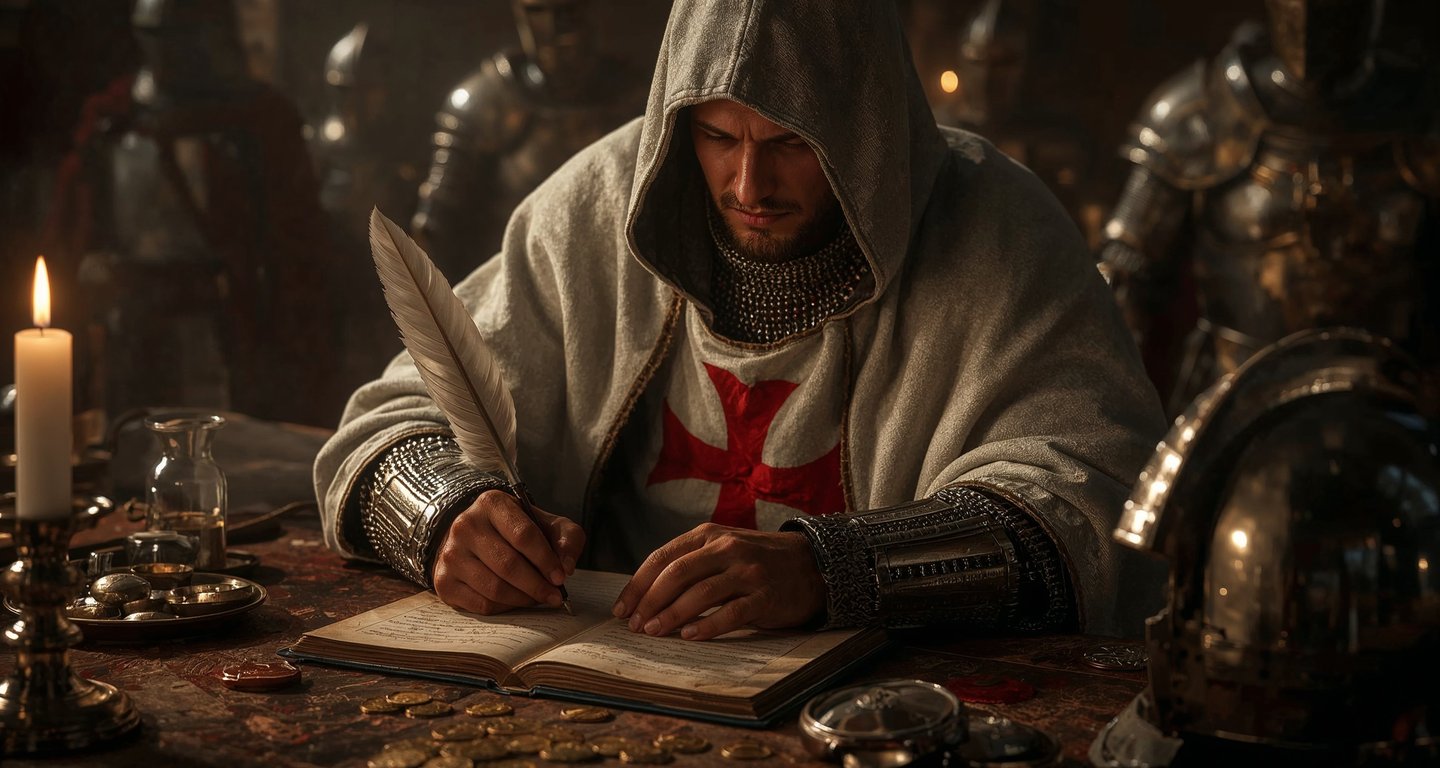

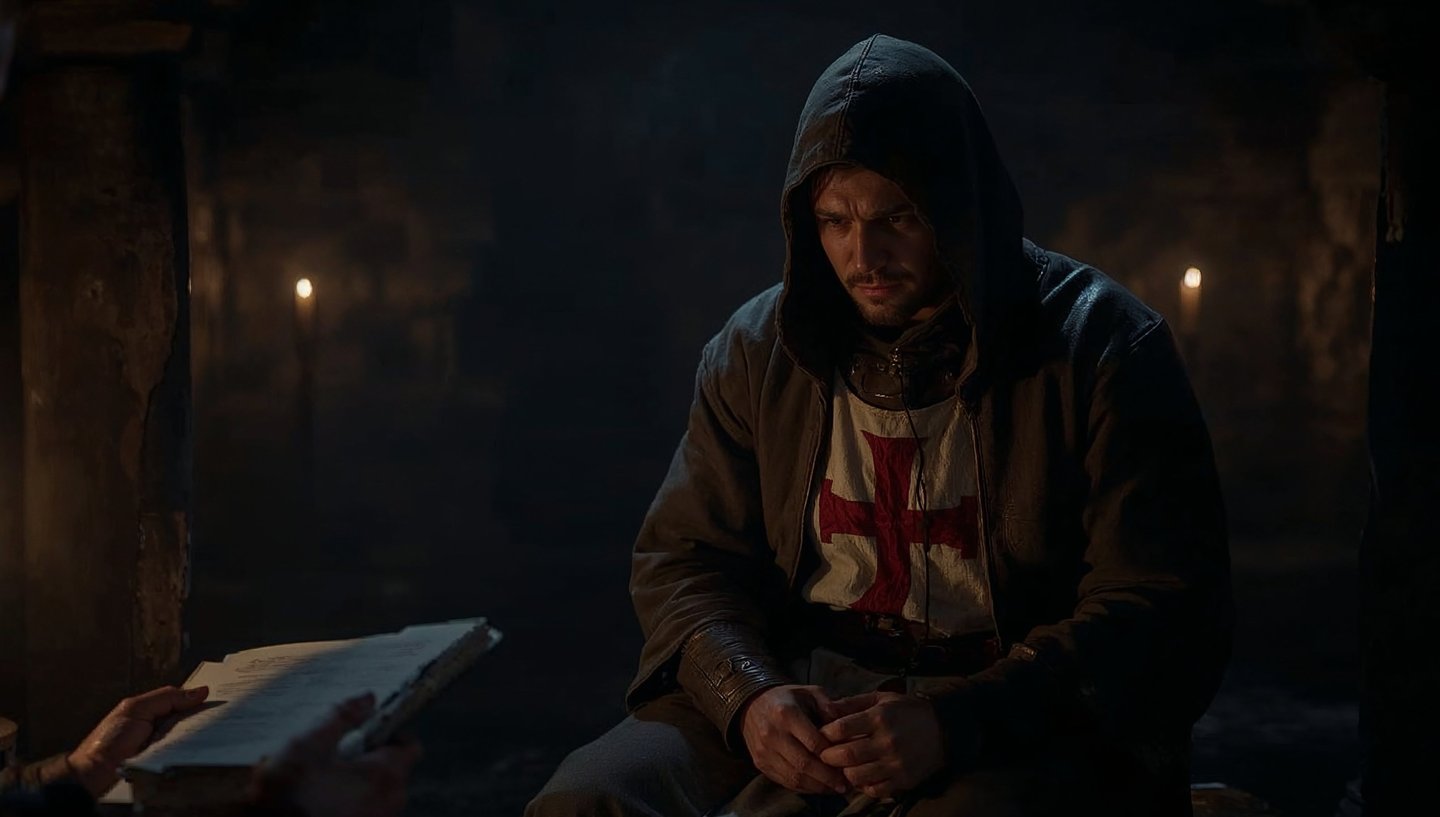

Torture, Confessions, and Betrayal
Under the iron grip of medieval torture chambers, many Templars confessed to sins they almost certainly never committed. [28] Shackled to the rack, burned with fire, or stretched until their joints tore, men who had once sworn vows of obedience and courage whispered whatever their captors demanded. Some admitted to spitting on the cross, others to worshiping idols, still others to renouncing Christ himself. These confessions, though wrung from broken bodies and shattered minds, were written down as proof of guilt—and once inked, they could not be taken back.
For ordinary Christians, these admissions were bewildering. To hear that knights once hailed as defenders of the Holy Sepulchrehad blasphemed Christ or engaged in secret perversions was unthinkable. Many of the faithful struggled to reconcile the charges with the Templars’ centuries of sacrifice. But fear and rumor are powerful weapons, and the spectacle of knights confessing publicly—even if under duress—eroded their once-untouchable reputation.
Philip’s case, however hollow, had achieved its purpose. With suspicion spreading, he turned his pressure toward the papacy. Pope Clement V, himself a Frenchman and a pontiff who owed his throne in large part to Philip’s influence, faced a perilous choice. [29] To defend the Templars meant defying the king of France, the most powerful monarch in Europe; to condemn them meant turning against men who had fought and died for the Church. For years he wavered, but at last, in 1312, Clement bowed to the storm. By papal decree, the Order was dissolved—its brothers declared disgraced, its honor stripped away by the very institution they had sworn to serve. [30]
The betrayal cut deeper than chains or fire. For the Templars, obedience to the Pope had been their highest duty, their sacred tether to God Himself. To be abandoned by the Vicar of Christ was to be cast adrift spiritually as well as politically. Lands and castles were parceled out to rivals like the Knights Hospitaller, while treasuries were emptied into royal coffers. In a single stroke, the mightiest order of Christendom was not merely defeated—it was unmade.
The Last Grand Master
By 1314, the fate of the Knights Templar rested on a handful of men, chief among them Jacques de Molay, their last Grand Master. For nearly two decades, de Molay had led the Order through the storms of politics and war, watching their mission in the Holy Land crumble and their brothers dragged in chains across Europe. Now he, too, was a prisoner—paraded through Paris not as a knight of Christ but as a condemned heretic.
The stage for his execution was set on the Île de la Cité, in sight of Notre Dame Cathedral, where crowds gathered to witness the spectacle. France’s king demanded closure, and the church—bowing to pressure—delivered it in fire. Alongside de Molay, other senior Templar leaders, including Geoffroi de Charney, were condemned to burn. The Order’s last voices were to be silenced not by the sword of Islam or the chaos of battle, but by the flames of their own Christian brethren.
As the pyre was lit and the smoke rose, chroniclers recorded that Jacques de Molay spoke defiantly. Rejecting the confessions wrung from him by torture, he proclaimed the innocence of the Templars and called on God to judge their persecutors. Then came the words that would echo through centuries of lore: he cursed both Philip IV and Pope Clement V, summoning them to appear before divine judgment within a year.
To the crowd, it was a shocking display of courage. To later generations, it was prophecy fulfilled. Within months, both Clement and Philip were dead—the Pope from illness, the King after a sudden stroke. For many, this was no coincidence but the final vindication of the Templars. Their bodies had been destroyed, but their honor, and their legend, had risen anew in fire.
From History to Legend
The Templars were destroyed in body, but never in memory. Their disappearance left a vacuum that quickly filled with rumor, legend, and fascination. The Order’s innovations in finance—letters of credit, networks of safekeeping, and reliable money transfers across borders—outlived them, influencing the banking systems that would shape medieval and Renaissance Europe. Their fortified castles, from the strongholds of Tomar in Portugal to the ruins at Safed in the Holy Land, still rise from the earth, silent monuments to a vanished brotherhood.
Yet it was not just stone and money they left behind. Whispers grew of hidden vaults, secret scrolls, and treasures spirited away before Philip’s men could seize them. Some spoke of the Ark of the Covenant or the Holy Grail, relics said to have been guarded in secret by the knights who once lived atop Solomon’s Temple. Others believed that surviving Templars went underground, continuing their brotherhood in shadow. Over centuries, these stories intertwined with the rise of Freemasonry, fueling conspiracy theories that endure even now.
The red cross of the Templar knight never faded. Instead, it bled into culture and imagination. From medieval legends to modern novels, films, and video games, the Templars remain both saints and shadows—warrior monks who straddled the thin line between recorded history and enduring myth.
The Enduring Mystery
From their humble beginnings as nine impoverished knights on the dusty roads of Jerusalem, the Templars rose to become one of the most formidable powers of the medieval world. They prayed as monks, fought as soldiers, and built fortresses and financial systems that stretched across continents. For nearly two centuries, they stood at the crossroads of faith, politics, and war. And then, in a storm of betrayal, envy, and ambition, they were cast down—erased not on the battlefield, but by the very rulers they once served.



